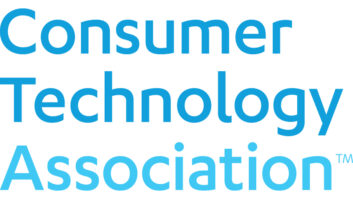Despite a sluggish retail environment, plummeting price points and unrelenting pressure from the national chains, member/owners of the MARTA Cooperative of America are holding their ground, and then some.
That was the message delivered to dealers and vendors at the buying group’s biannual meeting and convention, held here earlier this month at the Fairmont Scottsdale Princess resort.
“It’s been a mixed year for MARTA, with some members up and some members down,” chairman and storeowner Roger VanVreede told attendees. “But the group is doing better than the industry average.”
Executive director Warren Mann concurred. “Last year we were up 30, 40, 50 percent with vendors,” and up double digits in majaps, he told TWICE. “This year’s been tougher, especially the second quarter,” with majaps up single digits and CE sales hurt by unrealistically high pricing by its primary electronics vendor. “Things slowed down around the time of the Iraq war, but we’re climbing back little by little.”
MARTA’s formula for success, relative to the industry, lies in low operational overhead, savvy merchandising and marketplace dominance, group leaders said. Indeed, with 101 members and some $2 billion in sales, average annual revenue is roughly $20 million per dealer, making them more important to vendors than typical independents.
“MARTA members are often the biggest, toughest independents in a marketplace,” noted Mann. And the group’s lower head count, “close-to-the-bone” budget and not-for-profit orientation enable it to often obtain sharper pricing than other groups. “We keep our programs simple and expenses low,” he said, and any profits are funneled back to the co-op’s dealer owners.
Another example of cost cutting is the recent purchase of a building in Scottsdale, to which MARTA headquarters will soon relocate. Thanks to low interest rates, owning rather than leasing the space will save the group about $4,500 a month, said treasurer, NARDA president and Nielsen’s principal Michael Fischer.
Small group size also allows members to “sit down and talk to key vendor contacts” at MARTA events, noted VanVreede, compared to larger organizations that draw “a couple thousand dealers to their shows.”
But perhaps MARTA’s greatest strength lies in two simple principals, explained Mann: “Never put any discretionary funds behind anything on Lowe’s’ floor,” and its broader CE corollary, “Don’t support a model or category that the nationals have.”
He conceded, “That means turning our backs on core best-sellers, but we would never take share over profit.” Instead, he said, the group is targeting brands like Toshiba and Frigidaire Gallery that can balance margin and sales velocity.
“Gallery is a good example of a better-quality, protected-type product that lets us fight Kenmore and Lowe’s and still make a profit,” he said.
Conversely, Mann saved his sharpest words for price-driven vendors who are “driving price points down while chasing an endless rainbow” with national accounts. The net affect, he said, is that dealers must now sell twice as much just to stay in place, while manufacturers continue to lose market share.
“Vendors don’t have the patience to look long term,” he said. “They’re destroying certain aspects of the business, like side-by-sides. It’s cancerous, its gangrenous, and once it starts, it can’t be reversed.”
One bright spot, however, is HDTV, which has “reset the price clock,” he said.
Individual dealers were more sanguine. “I don’t need to compete purely on price,” said 50-year industry veteran and Furniture Fair principal Itchy Popkin. “We have a lot of repeat business, we can move faster on delivery and repairs, and take better care of customers’ needs. I also sell furniture in addition to white and brown goods, making me one of the few retailers that sell all three.”
Looking ahead, Popkin believes the fourth quarter will be an improvement over last year’s. “People are more optimistic now that most of the war is over. They’ve been holding off major purchases, and there’s a lot of pent-up demand.”
Tom Edwards, senior industry analyst for NPD Techworld and a MARTA guest speaker, echoed Popkin’s optimistic retail outlook.
“Our guess is the economy will continue to improve and we’ll have a good fall, although retailers will still have scramble,” he said, noting that the rebound began in April after business bottomed out in February.
Edwards reminded dealers that consumer buying behavior continues to favor promotional and luxury products at the expense of the vast middle. To compete effectively, independents need to behave more like specialists by offering a product mix that eschews commodities and differentiates them from big box chains, he said.
In an open appeal to vendors, VanVreede stressed the “rough business climate,” and urged manufacturers to “do what you can to keep us on a level playing field, to educate our people. Anything you can do at store level is greatly appreciated.” He also asked that vendors “understand dealers’ financial needs, and what it takes for a dealer to survive.”
MARTA’s next meeting is slated for March 6-7, 2004, followed by its buying show on March 8-9, at the Gaylord Palms in Orlando, Fla. The group returns to the Fairmont Scottsdale Princess next August 17-20.













